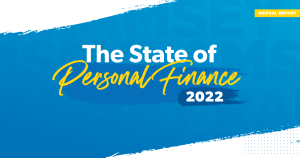Key takeaways
- Filing for bankruptcy is expensive with costs starting at more than $1,300.
- Declaring bankruptcy can have a long-term impact on your finances.
- A bankruptcy filing stays on your credit report for seven to 10 years, potentially making future credit more expensive.
Filing for bankruptcy can help you restructure or discharge your debts and give you more time to repay the debts that you still owe. While many people think of bankruptcy as a sort of reset button, you’ll still owe some money. And filing for bankruptcy also comes with costs of its own.
How much it costs will depend partly on what type of bankruptcy you choose and if you hire an attorney, which most people should. However, you should consider long-term costs as well.
Immediate costs of bankruptcy
Filing for bankruptcy can be expensive, which is one of the reasons it’s difficult to get out of your debts.
The filing fee, which starts at about $313 depending on the type of bankruptcy case you’re filing, is just one of the costs you’ll pay. You also have to pay for:
- Credit counseling: Available free from non-profits depending on your income, but up to $50+ elsewhere
- Attorney fees: $1,000 to $,6,000
- Court fees: Variable
Chapter 7
Chapter 7 bankruptcy, also known as liquidation bankruptcy, involves selling your assets to repay your debts. Chapter 7 is generally for people with an income below the median for their state, or who meet a somewhat complicated “means test.” The basic filing fee is $338.
Most unsecured debts, like personal loans, are discharged during this process, even if you don’t have enough cash or assets to pay them in full. If you have secured debts, like a mortgage or auto loan, the asset may be foreclosed on or repossessed. However, your state’s exemption laws may help protect your auto or home.
Neither type of bankruptcy will get you out of tax and other government debts, child support or alimony payments.
Chapter 13
Chapter 13 bankruptcy is the more expensive form of bankruptcy. Unlike Chapter 7, which involves selling off most of your belongings, Chapter 13 reorganizes your financial life and debts, giving you a chance to keep certain properties. The filing fee is $313, but because of the lengthy process, lawyer fees add up.
Chapter 13 lets people keep assets such as a house and extends the time they have to repay creditors, usually to a period of three to five years. To be eligible, you can’t have more than $2,750,000 in secured and unsecured debts at the time of filing.
When you file, the court will help you come up with a payment plan that lasts between three and five years. If you make all of the payments on this plan your unsecured debts are discharged. As part of the payment plan, you’ll work with an appointed trustee to manage the payments to your creditors. The trustee often takes a commission of up to 10 percent, adding to the cost of this form of bankruptcy.
The long-term costs of bankruptcy
Beyond the immediate cost of bankruptcy, filing can have a long-term impact on your financial life. The most obvious effect is that your credit score will drop by a huge amount. Your bankruptcy will stay on your credit report for seven to 10 years.
While the bankruptcy is on your credit report, you’ll likely struggle to qualify for new loans. Even if a lender does offer you a loan, you’ll have to pay a higher interest rate than someone with good credit. Higher interest can significantly increase the cost of your loans. It can mean paying more to buy a home or a car or even finding yourself unable to make large purchases due to a lack of willing lenders.
Some landlords and even employers may check your credit as part of your application to rent an apartment or get a new job. A bankruptcy on your credit report could hurt your chances there as well.
Pros and cons of bankruptcy
Before taking a major step like filing for bankruptcy, it’s important to understand all of the ramifications, including the benefits and drawbacks.
Pros
- It provides a fresh start financially.
- You’re protected from creditors pursuing payments.
- Some debts may be discharged entirely.
- You’ll pay less than what you owe on some debts.
- Stops foreclosure on your home.
- Halts repossession of your car.
- Prevents legal action being taken against you.
Cons
- Filing fees are hundreds of dollars and lawyer fees cost even more.
- You could lose some assets.
- You will still be responsible for paying some debts.
- Your credit score will drop.
- Obtaining loans or credit in the future can be more difficult.
- Bankruptcy remains on your credit report for seven to 10 years.
How to minimize bankruptcy costs and effects
There are some things you can do to save money when filing for bankruptcy.
It’s possible to file without an attorney, but experts warn that it can lead to mistakes that prompt the court to dismiss the case. Bankruptcy judges and other court employees are prohibited from offering legal advice, as are services that prepare bankruptcy petitions for a fee.
One option for reining in how much it costs to file for bankruptcy is seeking a pro bono attorney who’ll forgo fees as a public service. There are a number of places to look for one, including state bar associations and local and regional free legal clinics.
Once you file, you’ll want to do your best to start rebuilding your credit as soon as possible. Applying for a secured credit card and making sure you make all of your loan payments could help you recover more quickly.
Alternatives to bankruptcy
If you’re unsure whether bankruptcy is the right step for you, consider the following alternatives.
- Debt settlement: Debt settlement involves negotiating with creditors in order to reach an agreement that allows you to pay less than the total amount owed. The negotiations with creditors can be conducted by you or by a debt relief company that specializes in this process. However, note a major drawback is that creditors may not necessarily agree to a settlement.
- Debt consolidation: Taking out a debt consolidation loan is another option to deal with significant debt. Debt consolidation works by combining credit cards, medical debt or other loans with a single loan and can help streamline your monthly finances. It may allow you to reduce the amount of interest you’re paying.
- Sell belongings: There are many ways to sell belongings you no longer need or use in order to earn extra cash to pay off debts. Online marketplaces such as eBay, Facebook Marketplace or OfferUp are just a few of the platforms where unwanted or unneeded items can help you earn money that can be used to pay off debts.
- Earn extra money: Establishing a side hustle or finding a second job can be another way to help eliminate debts more quickly. The average side hustlers say they make $891 on average per month in extra income, according to Bankrate’s 2024 Side Hustle Survey. Options like Lyft and Uber allow you to earn extra money providing rides, while apps like Rover provide income for walking dogs. If you’re handy around the house, Taskrabbit is another option, allowing you to sign up to help people with everything from cleaning to furniture assembly.
The bottom line
If you’ve fallen into inescapable debt, bankruptcy gives you a chance to take back control of your financial life. However, bankruptcy isn’t free. You can expect to pay a few hundred to thousands of dollars to cover court fees and attorney costs. There are also long-term impacts on your finances that you’ll want to prepare for.
Read the full article here
















